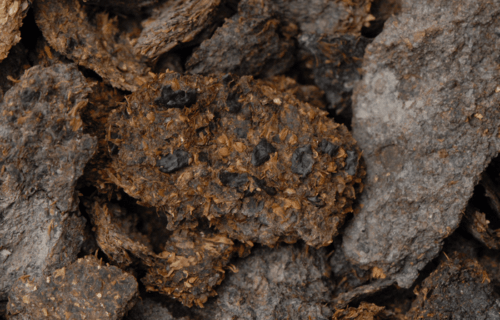
BOLZANO, Italy — Ancient poop fossils are helping researchers uncover some surprising details about the lives of Europeans thousands of years ago. The new study has discovered that miners in what is now present-day Austria had a diet that many people might recognize today — 2,700 years later. An international team found two fungal species in these fossils which humans use to make beer and blue cheese.
The human feces fossils come from the prehistoric salt mines of the Austrian UNESCO World Heritage area Hallstatt-Dachstein/Salzkammergut.
“Genome-wide analysis indicates that both fungi were involved in food fermentation and provide the first molecular evidence for blue cheese and beer consumption during Iron Age Europe,” says Frank Maixner of the Eurac Research Institute for Mummy Studies in a media release.
“These results shed substantial new light on the life of the prehistoric salt miners in Hallstatt and allow an understanding of ancient culinary practices in general on a whole new level,” adds Kerstin Kowarik of the Museum of Natural History Vienna. “It is becoming increasingly clear that not only were prehistoric culinary practices sophisticated, but also that complex processed foodstuffs as well as the technique of fermentation have held a prominent role in our early food history.”
Poop fossils are ‘first evidence’ of early blue cheese production
Maixner and Kowarik’s team used in-depth microscopic, metagenomic, and proteomic tests to examine the microbes and DNA in these fossils. Study authors say these analyses allow scientists to reconstruct how people lived long ago — including what was in their diet.
Results identified bran and glumes of different cereals as the most common plant fragments in the miners’ feces. Study authors say the highly fibrous, carbohydrate-rich diet they found in the fossils likely comes from eating broad beans, fruits, nuts, or animal food products.
The study finds ancient miners, up to the Baroque period, also had a gut microbiome that’s closer to what doctors see in modern non-Westernized individuals. People with such a gut makeup typically have a diet focusing on unprocessed food, fresh fruits, and vegetables.
When the team shifted their analysis to include fungi, they found a big surprise. In an ancient poop sample coming from the Iron Age, the team found an abundance of Penicillium roqueforti and Saccharomyces cerevisiae DNA.
“The Hallstatt miners seem to have intentionally applied food fermentation technologies with microorganisms which are still nowadays used in the food industry,” Maixner explains.
These results provide the first piece of evidence that humans were producing blue cheese during the Iron Age nearly 3,000 years ago. The team is hoping to learn more about the early history of fermented food production in future studies.
The findings appear in the journal Current Biology.
